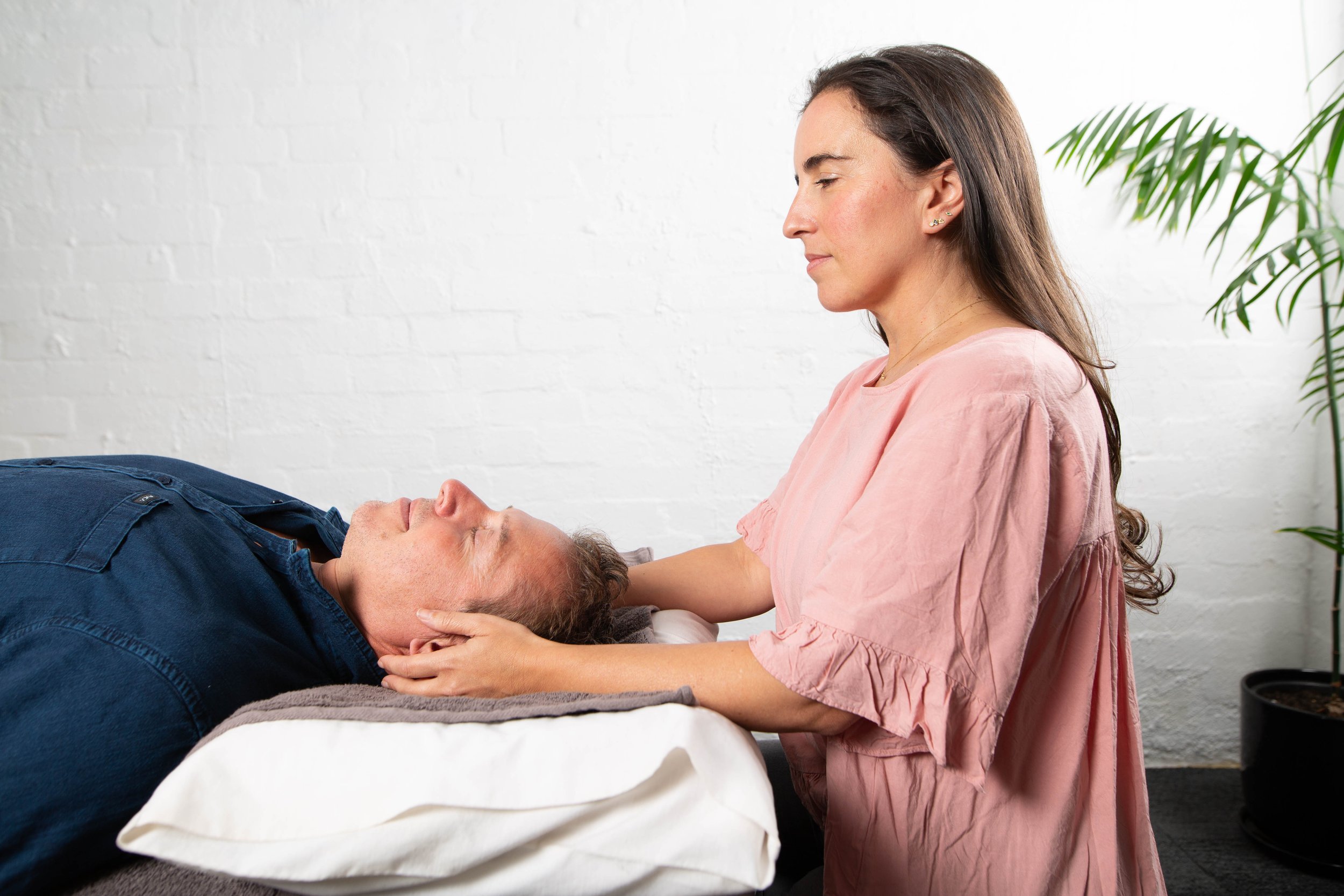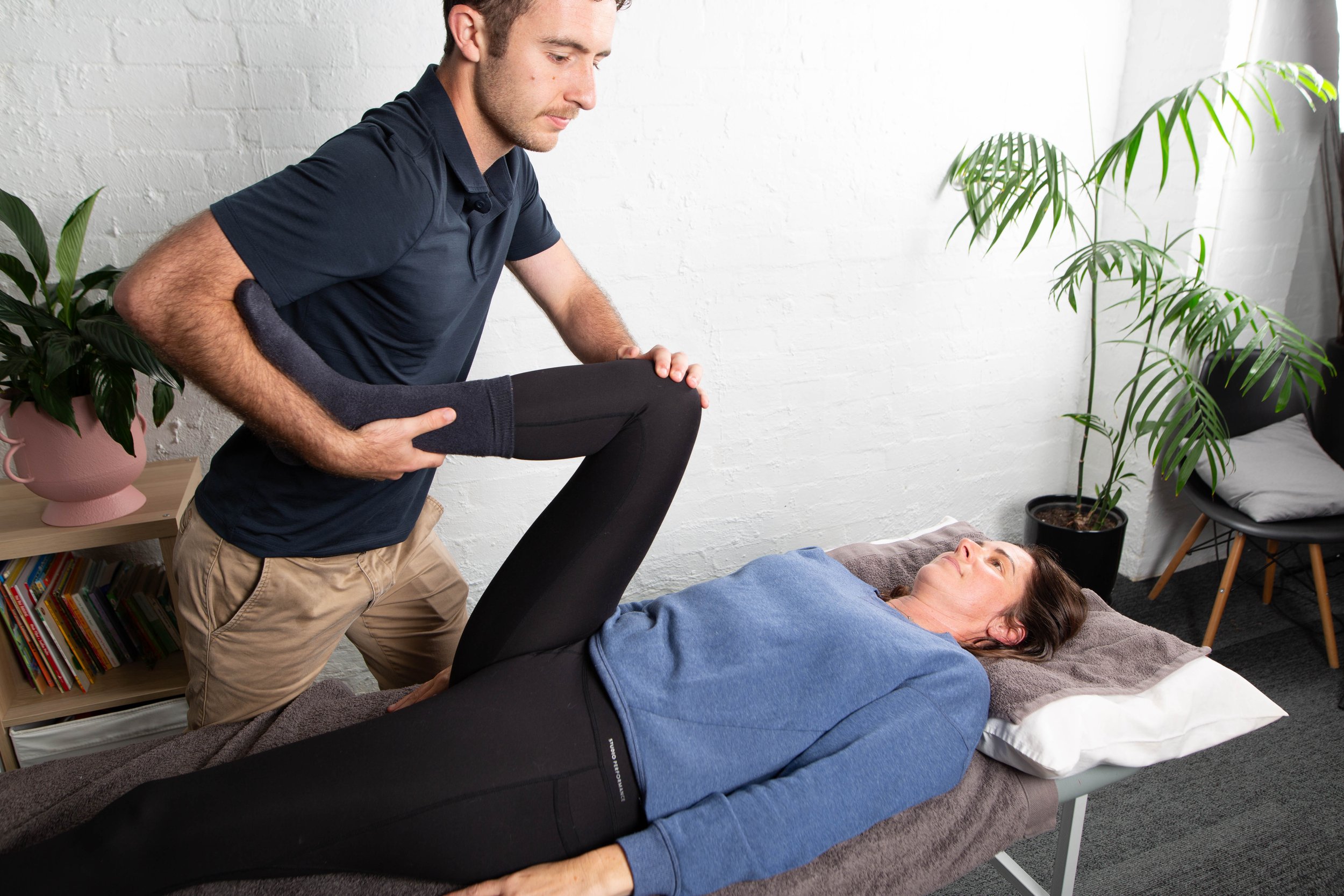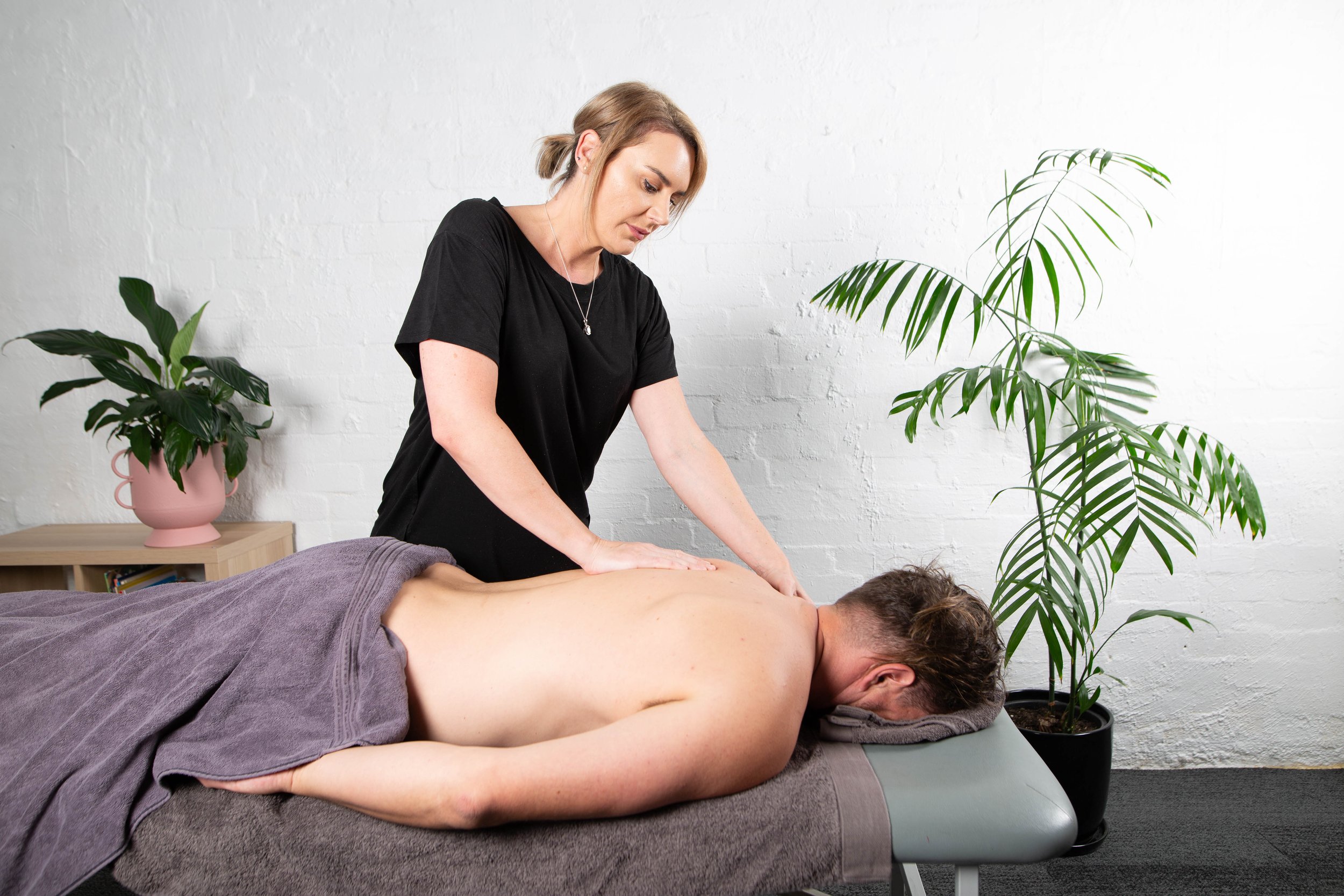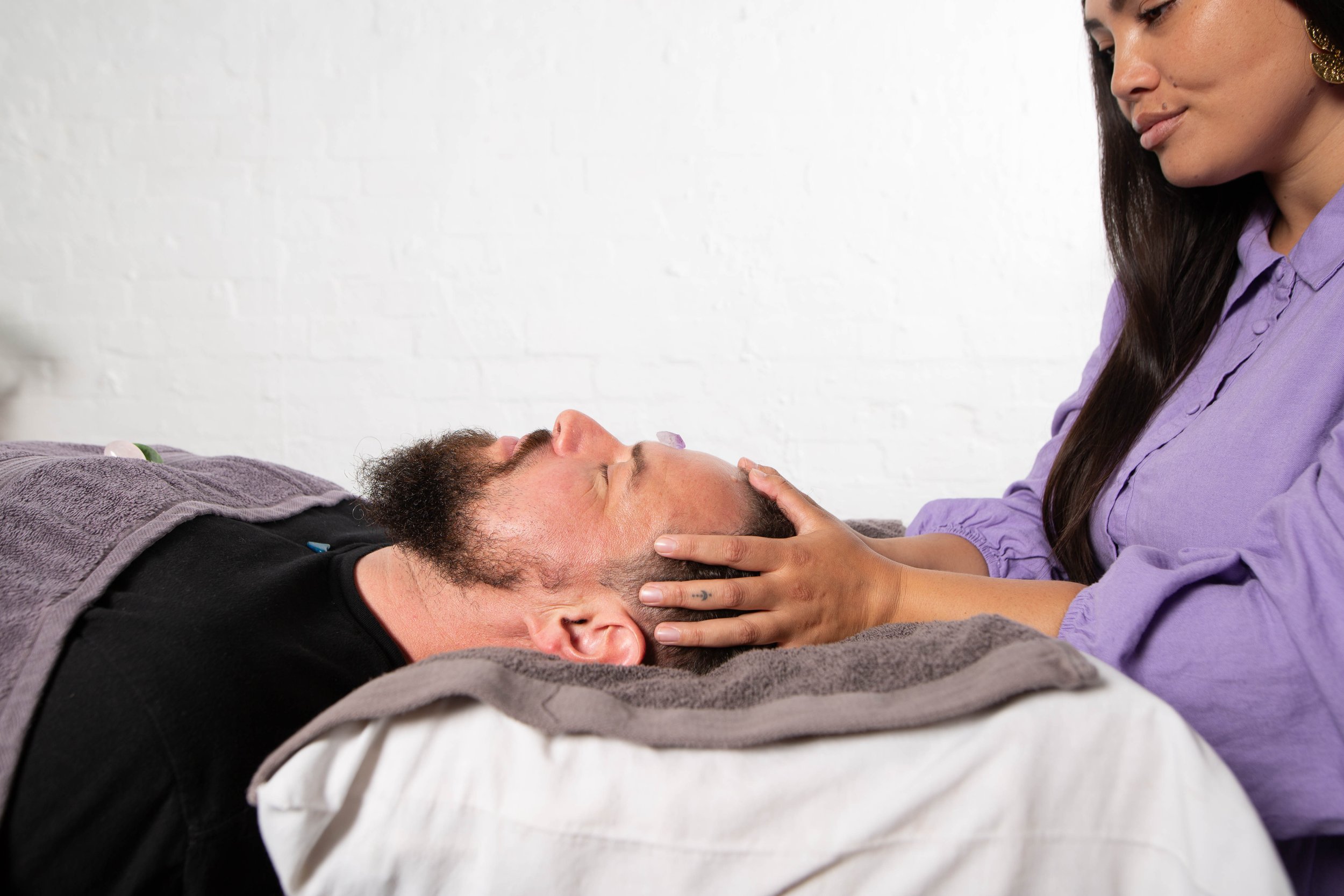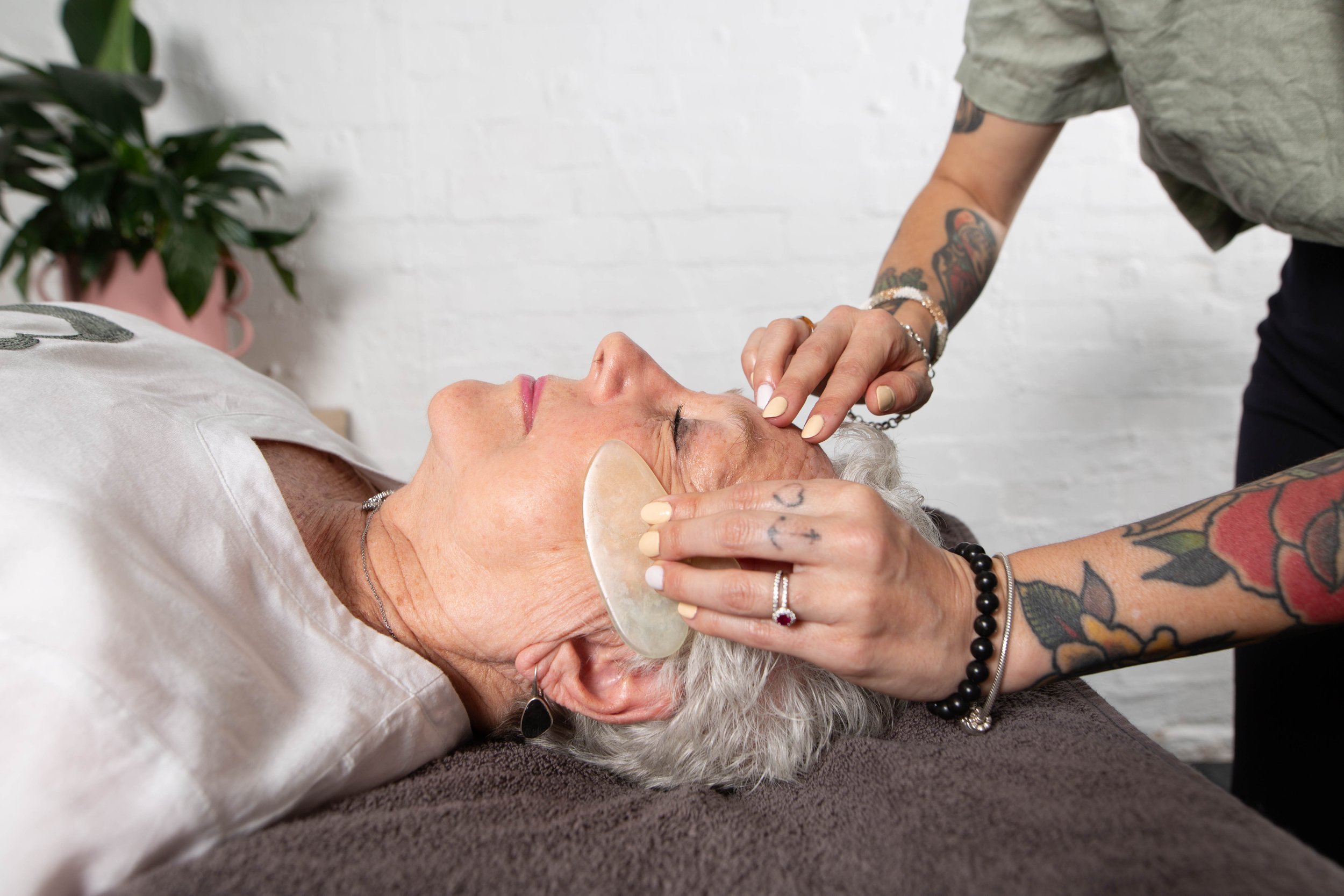Our Services
Osteopathy Services
-
During pregnancy your body undergoes a great amount of change and development to accommodate a growing fetus.
The postural changes and increase in weight are obvious, but other changes may be more subtle like the effects of hormonal softening of ligaments and the position of the growing baby. A combination of the above can put additional pressure on your joints and muscles of your spine and pelvis.
The most common complaints during pregnancy:
Lower Back Pain
Sciatica
Pubic symphysis pain
Shortness of breath
Neck, shoulder and upper back pain
Insomnia
Swelling
High blood pressure
FatigueThe philosophy of Osteopathy is that structure and function are interrelated. In layman terms this means that our treatments aim to normalise the structure, so that it functions as efficiently as possible.
We aim to assist the natural process of pregnancy and birth by aiding the body to adapt and align as the pregnancy progresses. Osteopathic treatment uses techniques appropriate for pregnancy, while making sure the mother is comfortable at all times.
At Liforce Osteopathy, we use specifically designed pregnancy cushions if we need you to lie on your front for certain techniques. All of our pregnant patients tell us how comfortable they are and the cushions can accommodate any woman, regardless of size. In fact, some women want to take it home with them just so they can continue to lie on their tummy!
During birth
During birth, a range of factors influences the descent of the baby through the pelvis. Stiffness and rigidity may interfere with the baby’s passage through the birth canal as well as the mother’s positioning during labour as they require the movement through their hips, pelvis and lower spine. More importantly, most pregnant women, particularly towards the end of the pregnancy, feel better with the least amount of tension and discomfort.
Osteopathy after pregnancy
Depending on the type of labour experienced, women can have a wide range of issues post-natally. The main issues that present to us at the clinic are musculoskeletal issues that may have arisen during birth or as a result of the pregnancy, presenting as pain and discomfort. If you have unresolved childbirth stresses from labour, these can contribute not only to ongoing back problems, but also to difficulties with menstruation, stress incontinence, and bowel problems such as constipation.
We often see women postnatally for musculoskeletal aches and pains associated with poor breast-feeding posture, lifting car capsules and prams, carrying your baby and bending over the cot.
-
Osteopathy may be suitable to help with addressing the musculoskeletal components of a wide range of health conditions in children and infants.
The Osteopaths at Liforce Osteopathy in Malvern are highly trained in gentle, non-manipulative techniques that are very beneficial in optimising the health of children and babies.
Babies
Birth is a wonderful part of the cycle of life and can sometimes be a beautiful and stress-free event. However, labour can also be very demanding and stressful on both the mother and the baby.
Strain or ‘Moulding’ to your child during pregnancy
At birth, much of a baby’s skeleton is more like cartilage, especially the plate-like bones that make up the skull. These bones are quite soft and malleable, and are designed to overlap and glide over each other, enabling them to sustain the forces of labour and allow the head to pass through the birth canal.
However, this pliability may mean that they are susceptible to strain and ‘moulding’, which is often evident after birth in babies that have asymmetrical, flattened, or markedly pointed head shapes. This may have occurred after a difficult labour due to:
the position and/or size of the baby
the position of the mother’s pelvis
the labour may be unusually long or short, or
if intervention has been used like forceps delivery or ventouse extraction.
trauma from a Caesar delivery if the baby is stuck in the mother’s pelvis.
A degree of moulding is normal, and usually resolves within the first few days after birth along with the normal processes of adapting to breathing in air, crying and sucking. However, in some cases the moulding can be retained and will need attention. Left untreated, the bony plates may remain overlapped, pulled apart, or under excessive strain. This is turn can cause tension or pinching in the delicate membranes that cover the brain and nervous system.
Overstrain of tissues and compression of joints in the head, neck and upper back may also occur as a result. This may affect many body functions such as feeding, digestion and breathing, and may cause other imbalances in the rest of the body.
The result of a difficult birth can present as:
irritability
excessive crying
difficulties feeding i.e not attaching well and/or favouring one side
colic
breathing difficulties
digestive problems
misshapen head
difficulties sleeping for long periods or not settling well
Osteopaths with post-graduate training in paediatrics are trained to detect any issues with the development of your baby as well as any musculoskeletal strains or patterns in the body. They use a subtle approach to treatment and choose certain softer techniques for little bodies.
Children
Some of the conditions that occur in babies may persist or become apparent in the young child, especially if there were restrictions that were not treated as a baby.
Osteopaths who treat children may be able to help with the musculoskeletal components that may be contributing to :
Growing pains
Headaches
Back and neck pain
If you have any questions regarding how Osteopathy may help your child, please call us to speak to one of our qualified Osteopaths.
Injuries in Children
Children may require an osteopathic assessment if they have a fall, especially if they hit their head, or land on their spine or bottom. Children have an amazing ability to ‘bounce back’, however some trauma can be retained in the tissues and joints of the body that may not be immediately apparent, but which can go on to cause problems later on in life as they grow into that strain pattern. Your osteopath will be able to find any restrictions in the musculoskeletal system that may be present, and then through treatment, they may prevent further problems from occurring.
Children’s Sporting Injuries
Sporting injuries are also common in children, as are other adolescent conditions such as Osgood Schlatter’s and Scheuermann’s disease. Osteopathy can be of great benefit in such conditions as well as with recurrent problems such as ankle sprains by addressing the musculoskeletal issues that may be contributing to the problem.
Your child’s posture
Keeping an eye on your child’s posture is very important. Influences such as carrying heavy school bags and increased use of computers can cause postural problems that may become more difficult to address as your child gets older. Signs to look out for, which indicate an early problem with posture include:
asymmetry in the shoulders (one higher or more forward than the other)
excessive slouching
curvature of the spine or turning in or out of the feet. (Check your child’s shoes – do they wear out quickly on one side more than the other? This can also point towards postural imbalance).
-
It is a very subtle form of osteopathic treatment based on gentle inherent motion within the body.
It is a technique that is used by osteopaths who have done specific post-graduate training to refine their skills in this field.
About Cranial Osteopathy
The name of Cranial Osteopathy came from Dr William Garner Sutherland, who discovered this gentle motion of the bones in the skull in 1898. He subsequently named this motion “cranial rhythm”, hence the name of the technique.
It has since been discovered that this gentle motion is present all over the body and is referred to by Osteopaths as Involuntary Mechanism or more commonly, the Primary Respiratory Mechanism (PRM) or Primary Respiration. The name “Cranial Osteopathy” still remains yet the treatment can take place anywhere on the body and is used to treat the whole.
About Primary Respiratory Mechanism (PRM)
The PRM is a very small motion consisting of very small amplitude. It can take from 30 to 90 seconds for motion to move from one direction to another. Tension in the body can disturb the PRM and, therefore, using a finely-tuned sense of touch, the Osteopath can sense from where this disturbance may be coming. This may even be away from the actual site of pain that the patient originally presented with. It can also give the Osteopath an overall sense of how the body is feeling, be that healthy, or stressed and tired. Treatment involves rebalancing the PRM so that through its self-healing capabilities, the body may be able to function at its optimum health.
The benefits of Cranial Osteopathy
Cranial Osteopathy treats the whole body and a wide range of conditions. Cranial Osteopathy is essentially one technique out of many that an Osteopath can do if they have done the post-graduate training. Therefore, it can be used as a different approach/ technique for all the presentations an Osteopath usually sees.
The biodynamic model of Cranial Osteopathy
Biodynamic model of Cranial Osteopathy is one that was founded by the world renowned American Osteopath Dr James Jealous. He took Cranial Osteopathy and combined it with the study of a German embryologist (“Biokinetics and Biodynamics of Human Differentiation”) and as it further developed, he named it Biodynamics of Osteopathy in the Cranial Field (BOCF).
This approach looks at the health of the individual rather than concerning itself with the problems. Therefore, instead of recognising the tissues that may be causing the restriction or lack of motion, it works by understanding the quality and movement of the PRM in the healthy tissues. By doing so, and allowing the PRM to have its full expression in the body, it may allow for healing to take place.
Dr Jealous discovered that there is a link between the PRM and the metabolic field in the embryo, which links a correlation between the PRM and the self-repair nature of the body. A Cranial Osteopath who works biodynamically will consider Health as a verb, look at the whole body, and allow for the self-correction ability of the body to take place.
-
Osteopathy can help increase your sporting performance and help you bounce back from injuries, whether you are an elite athlete or a weekend warrior.
Prevention is always better than cure and Osteopathy can help keep your body to stay in alignment with minimal tension and optimal range of motion in order to help prevent sporting injuries from occurring.
Some issues that Osteopathy may help with include:
Lower back injuries
Leg muscle strain and tears i.e hamstrings, quads, calf
Osteitis Pubis
Rotator cuff injuries
Swimmers shoulder
Ligament strains i.e. ACL, PCL, Achilles
Tennis and Golfers Elbow
Wrist and finger sprains
Compartment Syndrome
Patella Tracking Disorder
Meniscus injuries
Plantar Fascitis
Ankle sprains
Joint restrictions and muscle tension can decrease sporting performance. Your Osteopath at Liforce Osteopathy may be able to help to minimize these restrictions and keep you functioning at your optimal level.
Compensation occurs when there are restrictions in your body and your Osteopath may also help to relieve these patterns to prevent re-injury. For example, an ankle sprain will lead to a change in the way you walk and can lead to compensation in the knees, hips and lower back. These need to be treated in order for you to return to performing at your best.
The Osteopaths at Liforce Osteopathy are all trained in orthopaedic diagnosis and can tell the difference between muscle, ligament and tendon strains. They can then apply appropriate treatment, refer directly for certain X-rays, suggest alternate imaging or prescribe stretches/strengthening exercises. We understand how important it is for you to return to your sport as quickly as possible and we are here to help you achieve that.
Chinese Medicine
-
Chinese Medicine is an ancient natural therapy, established around 5000 years ago. It aims to promote health and well-being by correcting the flow of energy (qi) in your body. According to Chinese Medicine philosophy, qi circulates through our body in pathways or meridians which are found under the skin.
Chinese Medicine includes various modalities such as acupuncture, cupping, gua sha, moxibustion, dietary and lifestyle advice.
How can Chinese Medicine Help You?
Traditional Chinese Medicine is used to treat not only illness and disease but is also used as a preventative medicine. By strengthening and enhancing our body’s normal functions and natural defences, our immune system becomes more balanced and a harmonious sense of well-being is promoted.
Each treatment is personalised to you depending on the symptoms you present with on the day.
In Chinese Medicine, energy (qi) flows through meridians within your body. When the flow of qi is disrupted, our bodies become unbalanced and can cause us to become unwell. Acupuncture helps to stimulate qi in our body and bring it back to a balanced state. We can feel stressed in our bodies which may lead to headaches, insomnia, anxiety, pain, recurrent infections and irregular menstrual cycle. We look at the body as a whole in the principles of Chinese Medicine and work to bring the body back into balance.
What to Expect
At your initial consultation we review your current condition, dietary patterns, along with your medical history and lifestyle. Your radial pulse is taken along with an observation of your tongue. These are essential diagnostic tools in Chinese Medicine. With this information we establish a Chinese Medicine diagnosis.
Your acupuncture practitioner will then select points helping bring your mind and body back into harmony. The acupuncture needles are usually retained for 20 minutes after insertion, however they may be left in for a shorter or longer period of time depending on your condition.
Your treatment may also include other therapies such as moxibustion, cupping, gua-sha, massage or prescribed herbal pills. These therapies complement and enhance your Acupuncture treatment.
If you have any medical records, x-rays, scans or blood test results please bring them to your consultation.
Allow around 60 – 90 minutes for your initial consultation. Subsequent consultations as part of a course or series of treatments will take between 60 – 75 minutes. In these consultations we assess the changes which have occurred since your list visit.
Acupuncture
Acupuncture today uses disposable filiform needles which are not much thicker than our hair. They are used to help balance qi within the meridians to help the person to stay well and to promote healing so the body can restore itself to optimum health.
Read more about other Traditional Chinese Medicine modalities – cupping, gua sha, moxibustion, dietary therapy.
Cupping therapy
Cupping therapy has been used in China for thousands of years. Glass cups are placed on the skin creating a vacuum-like effect. Cupping helps to stimulate the circulation of energy (qi) and blood which improves the immune response in the local area. Cupping can be used to help muscular aches and pains.
Gua sha therapy
Gua sha therapy involves scraping of the skin using a Chinese spoon or gua sha tool such as jade. It is primarily applied to the back, neck, shoulders, buttock and limbs of the body. When applying gua sha, first the area is lubricated with oil. Gua sha is used to help move qi and blood stagnation in the body. It helps to harmonise the body to help the healing process.
Moxibustion
Moxibustion is a traditional Chinese medicine technique that involves the burning of mugwort (Artemesia Vulgaris). It usually indirectly applied by holding a moxa stick close to the skin or placed on top of an acupuncture needle. It is used to warm and stimulate the flow of qi in the body.
Dietary therapy
Dietary therapy can be used to help correct specific imbalances in the body. Depending on the pattern of disharmony different foods are suggested to help allow the body to create optimum energy (qi) and blood flow for health and wellbeing.
Massage
-
How can remedial massage benefit you?
Remedial Massage Therapists are trained to assess and treat muscles, tendons, ligaments, connective tissue and assist in treating injuries and general muscle soreness.
They use a variety of techniques for use in pain management of chronic musculoskeletal conditions, postural conditions, sporting and occupational injuries.
Each treatment is tailored to the individual and a personalised treatment plan and home advise is given.
Remedial Massage is beneficial for:
Muscle tension and pain
Headaches/Migraines
Increasing flexibility and mobility
Stimulating the lymphatics to promote blood flow
Treatment of overuse injuries eg Tennis Elbow
Joint pain/Arthritis
Muscle pain during Pregnancy
Sporting Injuries
Improved relaxation and general wellbeing
Pregnancy massage
Pregnancy massage is the application of Swedish and Remedial massage techniques to reduce stress and promote general wellbeing throughout pregnancy.
Benefits of massage during pregnancy include; reducing muscle tightness, leg cramps, headaches, oedema, blood circulation, joint pain and assisting with relaxation.
Regular massage throughout pregnancy may improve comfort for the mother during birthing and assist with a speedier return to optimal fitness post-birth and should be part of the holistic approach to the health of both mother and child.
Deep tissue massage
This treatment targets the deeper layers of muscle and surrounding connective tissues, and can assist with a range of conditions and pains through slow strokes and deep finger pressure on constricted areas by either following or crossing over the muscle fibres, fascia and tendons
Sports massage
The type of massage technique or treatment applied is dependent on the nature of the stage of training or competition, sports injury or condition, and the assessment of the client.
Sports massage involves the objective assessment and treatment of amateur and elite athletes alike, focusing on prevention and treatment of sports-related conditions.
Sports massage is used to help prepare athletes pre competition as well as assist in subsequent recovery from training and competition.
Myofascial release
Myofascial release is a safe and very effective hands-on technique that involves applying gentle sustained pressure to the Myofascial connective tissue restrictions.
The fascia connects every part of the body, the therapy is based on the principle that poor posture, physical injury, illness and emotional stress can shift the body out of alignment and cause the intricate web of fascia to become tight and constricted.
This type of massage eliminates pain and restores motion and function to the body. Adhesions and scar tissue may also be broken down with these types of massage.
Trigger point therapy
Trigger point therapy is a form of remedial massage where direct pressure is applied to localised points in the tender muscle tissue to bring about reduction in muscle tension and pain relief. Trigger point therapy can be an extremely effective tool in combating acute and chronic muscular pain and fatigue.
-
Enjoy a signature Relaxation massage with Phoebe. A bespoke catered blend of relaxation, therapeutic & traditional massage styles.
A Relaxation massage includes a full body treatment, allowing for a deeply relaxing, nurturing & restorative massage experience. Relaxation massage style draws upon an intuitive blend of Hawaiian Lomi Lomi, Balinese, Traditional Thai & Swedish Massage, formulating a deep relaxation massage experience uniquely catered for you.
Please note that Relaxation Massage is not covered by Private Health Funds. For Pregnancy massage, please book Remedial massage option.
Holistic Therapies
-
This healing package starts with a signature Relaxation massage - a full body relaxation massage treatment drawing upon an intuitive blend of Hawaiian Lomi Lomi, Balinese, Traditional Thai & Swedish Massage styles. Formulating a deeply relaxing, nurturing & restorative massage experience unique for you. Massage is then followed with Reiki Energy Healing, dropping into a deeper level of relaxation & restoration.
Reiki Energy Healing is a hands on, non-invasive, ancient energy medicine healing modality restoring normal, vital life flow (chi/ki). Working on the bodies major organs & energy points, Reiki helps restores energetically the bodies systems, assisting in overall mental, spiritual, emotional & physical health.
Reiki sessions include crystal use, energy alignment & balancing, chakra balancing & energy clearing. Healing package is finished off with a detailed 30 minute intuitive energetic/medical intuitive reading & spiritual guidance gained during the Reiki treatment. Readings can be recorded by client’s own device.
-
A high performance facial that combines relaxation & healing with real results. Using various elevated lymphatic tools to massage the face, Holly will relax facial muscles, flush out toxins & get your skin looking its glowing best.
-
Meet NuCalm: New technology to help you disconnect.
Our high-tech age demands high-tech stress relief. Other methods are unnatural, time-consuming, unreliable. But NuCalm‘s patented, clinically-proven solution relaxes users without drugs, without delay, without fail. It’s stress relief for the way we live today – technology to help you disconnect.
The Benefits of NuCalm
NuCalm holds the only patent in the world for balancing and maintaining the health of the human autonomic nervous system without drugs
A balanced autonomic nervous system will:
Increase energy
Improve mood / emotional state
Improve sleep quality
Stimulate digestion
Decrease stress hormone production (cortisol & adrenaline)
Lower heart rate
Slow breathing rate
Decrease blood pressure
Increase blood flow / circulation
Enhance immune function
What is NuCalm?
NuCalm is the world’s first and only patented neuroscience technology clinically proven to lower stress, improve sleep quality and affect the human Autonomic Nervous System – WITHOUT drugs!
It takes you out of the fight and flight/stress mode that most of us are living in and promotes deep healing and relaxation. It works by using Neuroacoustic software that change the brain frequencies to reach a Theta state (where healing and recovery take place) and a Biosignal Processing disc that uses electromagnetic frequencies that biochemically help your brain to interrupt adrenalin and cortisol release.
What does a NuCalm session involve?
There is a 20 minute Power Nap and a 50 minute session that goes much deeper. This is ideally where we would encourage patients to start as it will give them the best benefits. However, the 20 min power nap is still very effective in it’s own way. The power nap is equivalent to 2 hours sleep and gives you an energy burst – amazing for any sleep deprivation to get through the day or simply for wanting to be more focused.
NuCalm is able to help with Anxiety, Depression, Stress, Insomnia, Neurological conditions, Recovery from sport, Brain Fog, Mental Clarity, Overwhelm PLUS many more….
The evolution of stress
First, let’s look at the difference between human stress vs the stress of other animals – psychological stress vs. physical stress. A real stressor (a short-term physical danger) activates a survival stress response. This short-term stress response results in an adrenaline “rush”, resulting in high energy, increased blood pressure, intensified learning & memory; it also shuts off all non-essential systems, such as digestion, reproductive and growth systems, thus allowing your body to maximize your chances of survival. Once the physical threat is gone, all systems are quickly restored to normal working function.
Similarly, physiological stress elicits the same responses. Making your mortgage payment, going through a divorce, juggling your family, job and kids schedules, are all chronic, psychological stresses only created by humans. This results in an unreal and chronic stress response, triggering an unnecessary release of stress hormones, such as cortisol and adrenaline. A constant state of psychological stress, often manifested by a lack of sleep, can result in a multitude of health issues (suppressed immune system, slowed metabolism, high blood pressure, etc.). This is just “a day in the life…” to us, but comes with dire physiological, neurological and biochemical consequences. Simply put, the evolution of the human body has not yet caught up to our new age lifestyle.
Ready to try NuCalm for yourself?
We are super excited to be able to offer NuCalm sessions now.
Simply click the booking button to select a time for you, a loved one…or anyone else really to experience what true relaxation feels like.
If you have any questions about NuCalm, please don’t hesitate to contact us during business hours or click here to visit our True Calm website
https://www.truecalm.com.au/
Osteopathy benefits
Osteopathy may help with, but is not limited to:
Back & neck pain
Headaches
Pregnancy aches & pains
Newborn irritability
Sporting injuries
Sciatic pain
Joint pain & arthritis - musculoskeletal components
Growing pains & injuries in children
Asthma & breathing difficulties - musculoskeletal aspects
Interview with Shane Crawford
Watch one of our Osteopaths, Dr Clare Gordon, chatting to Shane Crawford about the benefits of Osteopathy.
Make a booking
Click the button to book any of our services.



